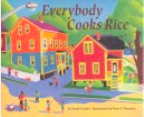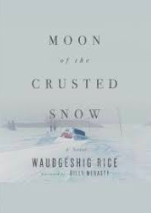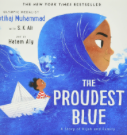TL;DR:
- Embrace diversity in the world by accepting differences that make us unique.
- Teach about diversity so that everyone learns to accept and embrace it.
- Can we represent every single student in a given year in our lessons? We say yes, absolutely!
- This post shares 3 picture books that you can use in your classroom.
Why is it important for students to see themselves represented in the curriculum?
As a racialized student, I never saw myself represented in the curriculum. But I was still engaged in school and loved learning. When I became a teacher, I did my honours research project on the importance of culturally relevant material being used in lessons. It was an important aspect of my teaching philosophy innately. I wanted to be genuine and teach towards being inclusive towards all students.
A very long time ago, I did research on this exact topic for my honours thesis. I researched from the point of view of a new teacher. There was evidence, of course, to say we all as individuals want ourselves represented in what is taught to us.
Why is it important for students in less diverse environments to see a variety of cultures represented in the curriculum?
Early in my career, I was a white teacher in a predominantly indigenous community. I struggled to find literature and materials which honoured my students’ culture. I asked a lot of questions and made a lot of mistakes. But I also learned lessons that lasted a lifetime. Now, in my predominately white school community, I am dedicated to sharing those lessons with my students, who have not experienced the beauty and challenges inherent to a culture different from their own. I am also determined to honour the variety of cultures in our global community. As a white teacher, I must continue to ask questions, make mistakes, and learn lessons alongside my students. When I know better, I teach better.
Teaching Towards Diversity: Considerations
- It’s imperative to learn about who we are and how we fit into the world that we embrace.
- Using multicultural picture books, novel studies are a good starting point for discussions.
- Make connections to curriculum expectations that make us remember the content through personalized learning opportunities.
Teaching Towards Diversity: How can we diversify the material we teach with?
- Multicultural and diverse picture books help bring perspectives into the classroom as starting point for discussions.
- Use quotes from inspiring people of all cultural perspectives.
- Create lessons so kids can pursue topics of interest, rather than “assigning” topics or people to study for biographies, etc.
- Work concurrently with art/music/dance specialists (if your school has these) to use multicultural activities in these domains, and make these cross-curricular.
- Integrate curriculum topics that we teach daily.
- Consider student interest in daily lessons with a backwards planning design.
- Research connections to the curricula.
- Ask questions from the students to make connections.
- Foster a growth mindset.
- Be a lifelong learner. We are never going to know everything, but if we are willing to learn then we can make a difference.
Research on the importance of multicultural literature K-12 and beyond…
The importance of students seeing themselves in the curriculum:
- “students who attend diverse public schools learn more, exhibit less racial prejudice, and report higher overall self-confidence” according to The Century Foundation.
- If you need one reason to teach about accepting differences it could be because we all succeed as a community, country, and world of citizens by doing so.
Teaching Towards Diversity: Picture books recommended from our classrooms

I love the Everyone Loves Rice book to start up discussions about similarities that people have in common since we can all relate to “Everybody Cooks Rice.”
The book is awesome at showing each of the main characters’ neighbours and how they cook. Finding things in common is an important consideration when getting to know each other’s cultural differences and as community members living in the same neighbourhood. I teach in a very diverse community where each of us has a very different set of beliefs that we bring into the classroom. As a teacher, it is my hope to find connections, relate, and build relationships that are trustworthy with classroom discussions. – Nilmini

I love Waubeshig Rice’s Moon of the Crusted Snow.
For me, it’s a local (Ontario) Indigenous author who writes a thrilling story of a post-apocalyptic dystopia. I use this book for high school students along with chapters from They Called Me Number One. While my student body is not as diverse as other communities, it’s important for them to see things from an FNMI perspective to bring more depth to land acknowledgments and settler/colonizer issues and the long-term ramifications of things like residential schools in the FNMI communities. Waubeshig Rice weaves a tale that is thrilling to read with parallels to colonialism vs. traditional ways, white settler colonialism, and white supremacy in the conflicts that occur. This book also shares the loss and the need for a return to learning traditional ways of life. – Ann
This year, I discovered The Proudest Blue by Ibtihaj Muhammad with S.K. Ali.

This amazing book tells the story of a young girl who is thrilled to wear hijab to school for the first time. In spite of the cruel teasing she encounters, the young girl refuses to give up the joy of her special day, and maintains her steadfast pride in her rich culture. This tale of being true to one’s beliefs sparked a much-needed and meaningful conversation in my classroom.
The Proudest Blue was a powerful choice for my sixth graders, who are at an age where the quest for peer acceptance causes a lot of inner turmoil. It would be an impactful teaching tool among younger and older students as well. The illustrations by Hatem Aly add an element of beauty to this important tale and it has become one of my top favourites. – Sandra
References:
Team of Guest Bloggers: Sandra Weir, Ann Weiler, and Nilmini Ratwatte-Henstridge
Sandra, Ann, and I are all educators connected by a Professional Learning network in the Twitter Universe where we met as educators collaborating on Chats and connected virtually this year. That’s something for teamwork moments among educators. We worked together on this blog and I’m so proud of this team effort.
Ann Weiler a high school educator currently working in an alternative/experiential education setting.
Sandra Weir is an elementary/middle school-level teacher in Québec, Canada. She has taught in a number of different settings, including a beautiful northern small town, and the bustling city of Mississauga, Ontario.
About Nilmini Ratwatte-Henstridge
Nilmini Ratwatte-Henstridge teaches in Brampton, Ontario, Canada. She was born in Sri Lanka and immigrated to Canada with her family. As an Elementary School Teacher who is passionate about Equity, Social Justice, and Human Rights in education, she enjoys teaching the younger generation to be global-minded citizens.
Discovering the world by connecting with others is an opportunity that we have today in our society today and she loves meeting new people! She is always learning while traveling to understand the inter-connectedness of this beautiful earth we live in! Nilmini LOVES cooking great meals, watching movies, and the latest fashion trends! Family and friends are close to her heart as she looks forward to balancing social media and navigating professional learning communities in education to network globally this year!


